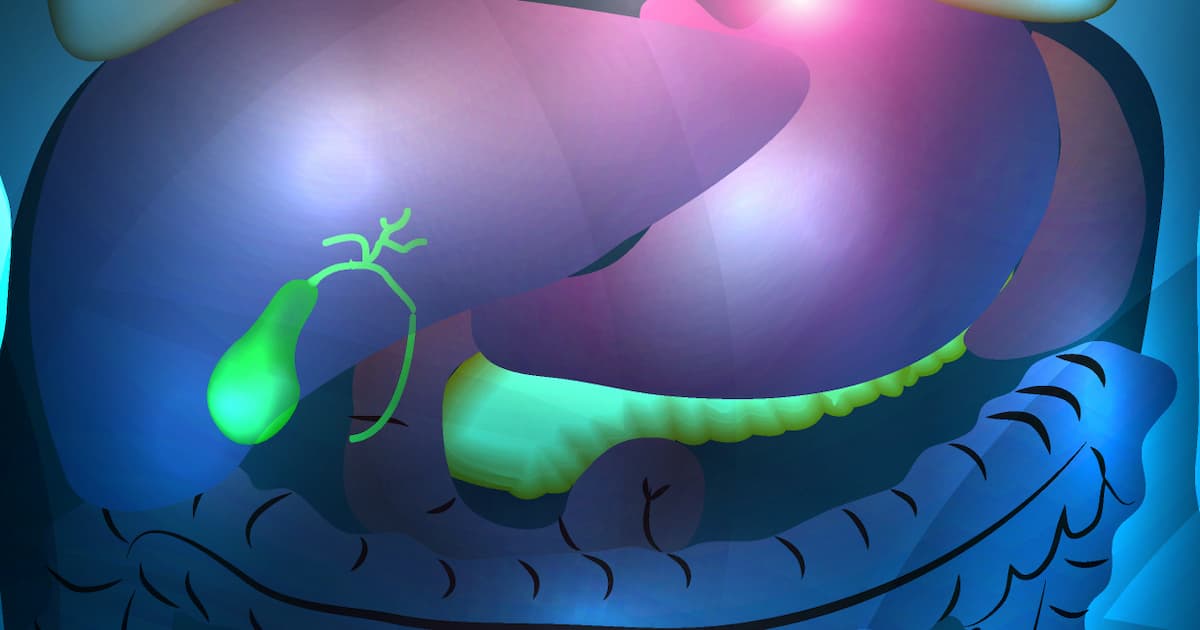Nab-Paclitaxel Combo Does Not Improve OS in Advanced Biliary Tract Cancer
Additionally, adding nab-paclitaxel to gemcitabine/cisplatin confers more toxicity than gemcitabine/cisplatin alone in the phase 3 SWOG S1815 trial.
Triplet cytotoxic therapy with [nab-paclitaxel plus gemcitabine/cisplatin] did not improve OS compared with [gemcitabine/paclitaxel alone] in newly diagnosed patients with advanced BTC," according to the study authors.

Supplementing gemcitabine and cisplatin with nab-paclitaxel (Abraxane) did not improve overall survival (OS) vs gemcitabine/cisplatin alone among patients with newly diagnosed, advanced biliary tract cancer (BTC), according to data from the phase 3 SWOG S1815 trial (NCT03768414) published in The Journal of Clinical Oncology.1
The median OS with the nab-paclitaxel triplet was 14.0 months (95% CI, 12.4-16.1) compared with 13.6 months (95% CI, 9.7-16.6) among those who received gemcitabine/paclitaxel alone (HR, 0.91; 95% CI, 0.72-1.14; P = .41). In each respective arm, the estimated OS rates were 56% vs 53% at 12 months and 25% vs 28% at 24 months. Additionally, data showed a median progression-free survival (PFS) of 7.5 months (95% CI, 6.4-8.5) and 6.3 months (95% CI, 4.4-8.2), respectively (HR, 0.89; 95% CI, 0.71-1.12; P = .32).
Subset analysis data highlighted that the PFS benefit with the nab-paclitaxel combination was more pronounced in patients with gallbladder carcinoma (GBC) than those with intrahepatic cholangiocarcinoma (ICC) or extrahepatic cholangiocarcinoma (ECC; P = .01), although investigators did not identify a similar trend regarding OS (P = .28). Numerical but statistically insignificant improvements in PFS (P = .17) and OS (P = .14) were higher in patients with locally advanced disease vs those with metastatic disease.
The nab-paclitaxel triplet produced an objective response rate (ORR) of 31% vs 21% with gemcitabine/cisplatin alone (P = .03). The disease control rate (DCR) in each respective arm was 78% vs 67% (P = .03).
“Triplet cytotoxic therapy with [nab-paclitaxel plus gemcitabine/cisplatin] did not improve OS compared with [gemcitabine/paclitaxel alone] in newly diagnosed patients with advanced BTC,” Rachna T. Shroff, MD, MS, FASCO, and coauthors wrote in the publication.1 “Acknowledging the heterogeneous biology of biliary malignancies, there is a need for rational genomic, transcriptomic, and artificial intelligence tools to not only select patients for targeted molecular and immune therapies, but also to guide targeted cytotoxic chemotherapies in future clinical trials.”
Shroff is the Interim Clinical Affairs Director, Cancer Center Associate Director of Clinical Investigations, Cancer Center Chief in the Division of Hematology/Oncology, and a professor in the College of Medicine at the University of Arizona Cancer Center.
In this open-label phase 3 trial, 441 evaluable patients were randomly assigned 2:1 to receive gemcitabine at 800 mg/m2 plus cisplatin at 25 mg/m2 and nab-paclitaxel at 100 mg/m2 intravenously once daily on days 1 and 8 of a 21-day cycle (n = 294) or gemcitabine at 1000 mg/m2 plus cisplatin at 25 mg/m2 on days 1 and 8 of each cycle (n = 147).
The trial’s primary end point was OS. Secondary end points included PFS, ORR, DCR, changes in cancer antigen 19-9 levels, and toxicity.
Patients 18 years and older with histologically or cytologically confirmed ICC, ECC, or GBC and documented metastatic or locally advanced unresectable disease per CT or MRI were eligible for enrollment on the trial.2 Other requirements for study entry included having no prior systemic therapy for current metastatic or locally advanced BTC, a Zubrod performance status of 0 or 1, and no active infections requiring systemic therapy.
The median age was 63.2 years (range, 23.2-88.8) in the nab-paclitaxel triplet arm and 63.9 years (range, 23.2-83.6) in the gemcitabine/cisplatin arm. Most patients in each respective arm were female (55%), White (83% vs 81%), and non-Hispanic (87% vs 85%). Additionally, most had ICC (67% vs 67%), metastatic disease (74% vs 72%), and a performance status of 0 (50% vs 51%).
Grade 3 or higher treatment-related adverse effects (TRAEs) occurred in 60% of the nab-paclitaxel triplet arm vs 45% of the gemcitabine/cisplatin arm (P = .003). The most common grade 3/4 TRAEs in each arm included neutrophil count decreases (37% vs 28%), anemia (33% vs 22%), and platelet count decreases (20% vs 15%).
Investigators carried out dose modifications for 88% of patients in the nab-paclitaxel triplet arm and 78% of those who received gemcitabine/cisplatin alone (P = .008). Additionally, 24% and 19% of patients in each respective arm discontinued treatment due to toxicity (P = .20).
References
- Shroff RT, King G, Colby S, et al. SWOG S1815: a phase III randomized trial of gemcitabine, cisplatin, and nab-paclitaxel versus gemcitabine and cisplatin in newly diagnosed, advanced biliary tract cancers. J Clin Oncol. Published online December 13, 2024. doi:10.1200/JCO-24-01383
- Gemcitabine hydrochloride and cisplatin with or without nab-paclitaxel in treating patients with newly diagnosed advanced biliary tract cancers. ClinicalTrials.gov. Updated November 26, 2024. Accessed January 17, 2025. https://tinyurl.com/2vtr82kd
Newsletter
Stay up to date on recent advances in the multidisciplinary approach to cancer.